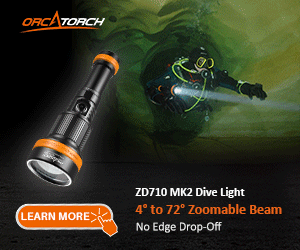SuPrBuGmAn:
The E330 competes right up there with Canon and Nikon budget dSLRs, they don't have better frame rates are buffering speeds. Its not a fair match to compare the E330 to the D200s or 5Ds, just as its not a fair match to compared the D70s/D50/350D to the D200s and 5Ds.
I was not comparing it to the D200, then it would really do poorly. From DBReview:
DPREVIEW:
D80
The D80 put in a very respectable performance, capable of shooting absolutely reliably at three frames per second for up to 33 seconds in JPEG mode, good buffering and fast SD card throughput ensure that the D80 will always be ready to fire off another burst of shots.
E330
However at HQ 1/4 or SHQ you will get just four frames in the camera's small buffer before the burst stops. This left me both disappointed by the buffer size and also Olympus's decision to require a re-press of the shutter release button to taek the next shot.
SuPrBuGmAn:
There are Pros who choose Olympus. One example?
http://www.thestudiocoach.com/ This guy is famous for his portraits and studio lighting, lately he's been doing his lectures with an Olympus camera - the E330 at that. Another? Mitsuaki Iwago shoots for National Geographic with an Olympus camera. God knows there are countless pros shooting with C&N, but Olympus cameras can produce as well.
It might be more credible if the were not sponsored by Oly, and did not use the OLY party lines in their write-ups. Mitsuaki is certainly well respected. But I don't see photojournalists using the OLY line-up, it's just too slow, and has very poor high ISO results, both things most pro's avoid. Oly has definately targeted the consumer market. Nothing wrong with that, but IMO it's not a serious choice for most professionals. UW MIGHT be one exception, but certainly the majority are using Nikon and Canon and will likley stay with those systems.
As an aside, I thought Stephen Frinks artilce a couple months ago in ScubaDiving was interesting.
SuPrBuGmAn:
The Zuiko 50-200 is about the same price as the 18-200 and extremely sharp, weathersealed, and small compared to the 18-200 or Canon's L equivelant. Everything has a tradeoff.
The Zuiko looks like a great lens, but it's not a 11X zoom, rather a 4x, it's faster than the 18-200mm, and it's bigger. A lot bigger in fact at 6.2"X3.0" vs. the 18-200mm which has a much smaller footprint at 3.8"x3". Apples to oranges, but I think OLY maybe making their lenses larger to work with a bigger sensor in the future as I can think of no reason why their lenses are so large when the sensor is less than 25% of the Nikon APS sized sensor.
SuPrBuGmAn:
Do you agree with the Highly Recommended rating the E500 recieved? I disagree with Phil's reviews because the E330 and E500 put out the same quality photos. The E330 has a unique feature at(at the time) a bloated price and gets kinda dumped on.
I think Phil bases his reviews on what is on the market at the time of the review. The E500 at the time of release had some features that were not available on any DSLR for $699. Fast forward to Jan 2006, and now Canon has announced a camera for about the price of the E330 that has a LOT more features, more lens support, a more traditional body style, etc.
Yes, I agree with Phil's reviews in general. They are backed by a lot of technical specs, shooting data, side by side comparisons, and he provides the reasons for his ratings. It's hard to disagree with someone so plugged into the Digial world who has set a fine standard for digital reviews.
SuPrBuGmAn:
I don't really believe there is a bad, current, dSLR on the market. Great shots can be taken with any of them, they all have their advantages and disadvantages which will have to be weighed by the photographer. In the end, results will be determined by the photographer's skill - not some camera.
Well I certainly agree with this to a point. However photography is an equipment based art form, and always has been. Digital has actually made this more true, not less. I don't care how good you are, blow up an image from a DSLR from 6 years ago and compare it to todays offerings.
Another thought is that I now routinely see shots of birds in flight that were just no possible 20 years ago. The AF systems focus tracking, shot rates, and higher ISO performance are so good that while the photographer is a very big part of the equasion, the technology has made things possible that were not in the past.



